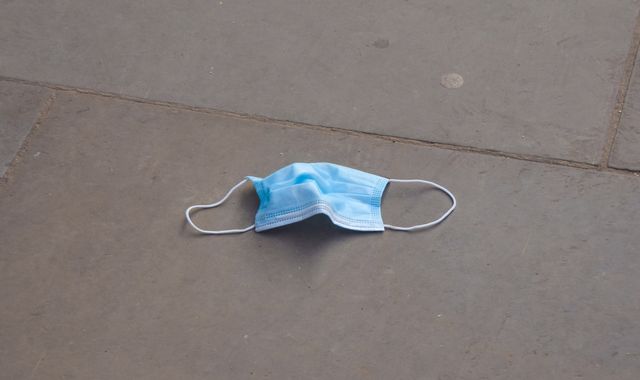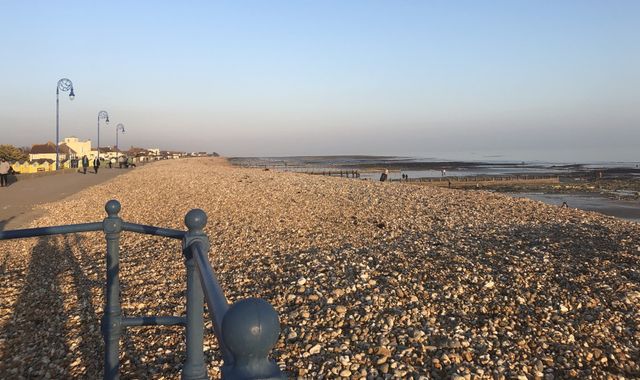Hospice strives for quality of life in shadow of death
Written by News on 02/08/2017
Think of a hospice and what comes to mind?

A crumbling Victorian property and hushed voices? Paper doilies and the smell of must and cabbage?
Some of those passed through mine as I travelled to Sheffield to spend three days filming at St Luke’s Hospice.
I could not have been more wrong.
Sky News was given the opportunity to go behind the scenes with staff, patients and their families at St Luke’s and found a place that defies preconceptions.
St Luke’s began to dispel mine before I got through the door.
A neat, modern building in a smart city suburb, it looks more like a private hospital than a care home.
A new wing houses the 20 bed in-patient ward. The majority of the rooms are singles with en-suite bathrooms and drop-down televisions, and there is even a whirlpool bath in a spa room, complete with light show for relaxation.
The busy day-centre hosts physical and creative therapy classes including an art room, and provides patients recently diagnosed with their first taste of palliative care.
The garden has been landscaped to allow patients’ beds to be pushed out so they can enjoy time outside even if incapacitated.
And the food is light years away from normal hospital fare. Run like a restaurant by chef Nick Wilkes, it provides fresh bread and a diverse daily menu.
He also delights in offering patients memorable food even if they struggle to eat.
He can provide more than 50 flavours of ice cream and lollies, or "re-formed" food that look and taste like cakes and sandwiches, but dissolve and can be eaten by those who struggle to swallow.
The core work of course is done by the clinical team of nurses, doctors and consultants who between them treat around 1,500 people every year.
Medical director Sam Kyeremateng told us a hospice is far more than a place where people come to die.
"People have a misconception that palliative care is about tucking people up at the very end of their lives," he said.
"We do look after people at the end of their lives, but a hospice is a transition point, a lot of our patients are in the community and what we are looking to do is to make sure that we can get them back home and get them to live as functional a life as they can."
Treatment is proactive and creative, and the majority of it takes place in people’s homes.
St Luke’s community team liaises with GPs and hospitals every day, prioritising those most in need who are visited at home.
The focus of the case is often pain relief, but support is also offered to relatives who are often the primary carer, and the focus is always the patient’s wishes.
If they want to stay at home and there is no clinical need for them to be admitted to hospital or a St Luke’s bed, the hospice helps make it happen.
Around 80% of hospice patients are treated at home. If that was extended to more people, it could drastically reduce the pressure on hospitals, where many people die despite there being no clinical need for them to be there.
Everyone agrees hospitals are the worst place to die, as well as being the most expensive for the health service.
The staff at St Luke’s were uniformly impressive and committed, each drawn to the unique challenge of palliative care, a discipline in which no-one is cured, but treatment makes an enormous difference to the end of life.
Most impressive of all, however, are the patients, many of whom spoke to Sky News with remarkable honesty and dignity about their terminal conditions.
We met Julie Drakeley, 52, who was diagnosed with motor neurone disease seven years ago. She still lives at home and requires full-time care, but comes to St Luke’s once a month to use the bath.
It offers her only respite from life in a wheelchair.
"I’m getting very close to the end of life and I trust the staff that are here," she said.
"I trust their competency, I trust that they care about me, and I trust that they want what’s best for me.
"The thought of dying in a traditional hospital bed haunts me. The thought of dying in St Luke’s, with the beautiful room, beautiful surroundings, with people who know me, who are listening to me, who have time for me, feels totally different."
There were many, many more.
Philip Hewitt, a former polisher from a Sheffield cutlery factory afflicted with lung disease. Clive Smith, a Royal Engineer who was on his second spell in the hospice and was cracking jokes to the last. And Alison Blackwell, bravely confronting the early stages of MND diagnosis.
Each of them reflected a different face of the city St Luke’s serves, and to which it is linked by the charitable status common to most hospices.
Just 25% of St Luke’s funding comes from the NHS. For the remainder, some £6m a year, it is reliant on donations, bequests and its chain of charity shops.
Every year it starts with an empty bucket. Those in its care will know it deserves to be filled.
(c) Sky News 2017: Hospice strives for quality of life in shadow of death





